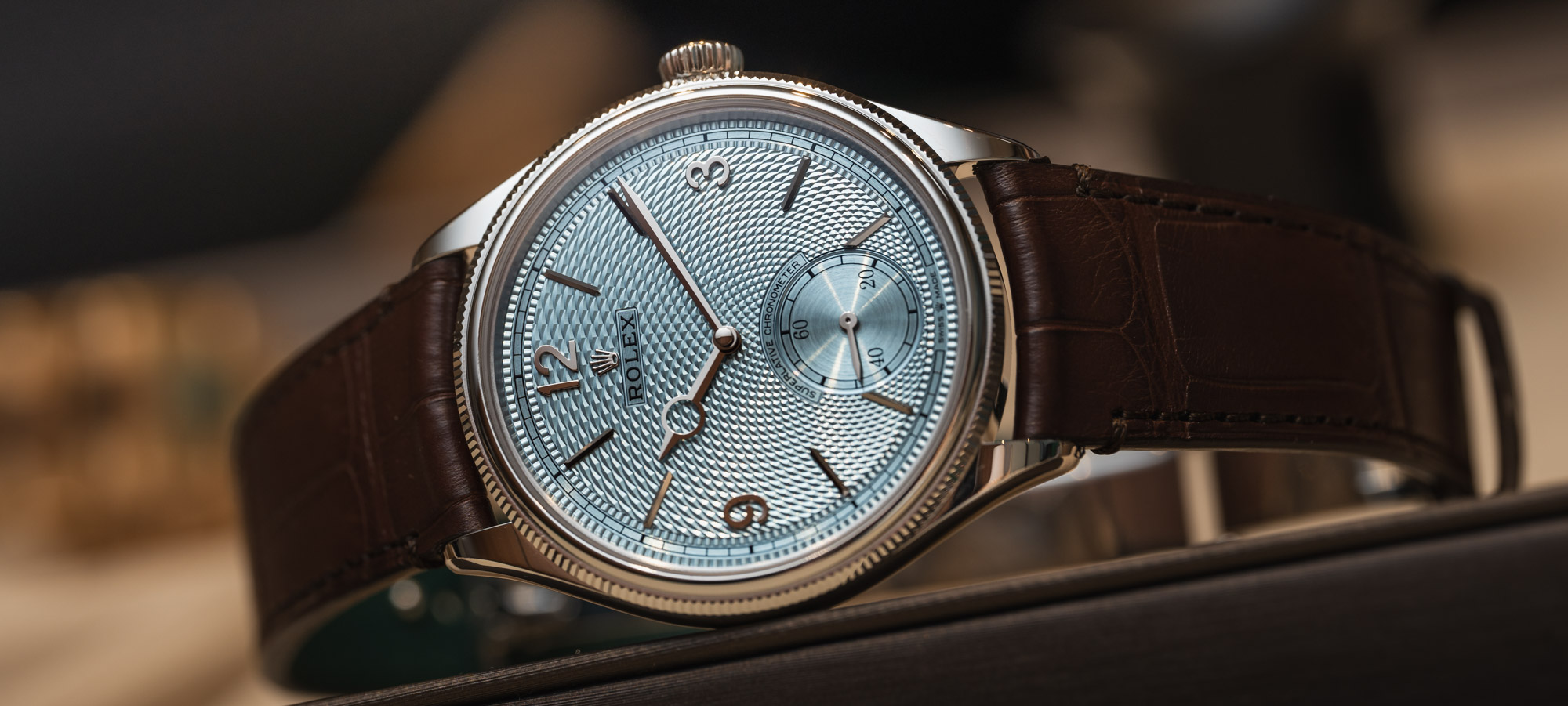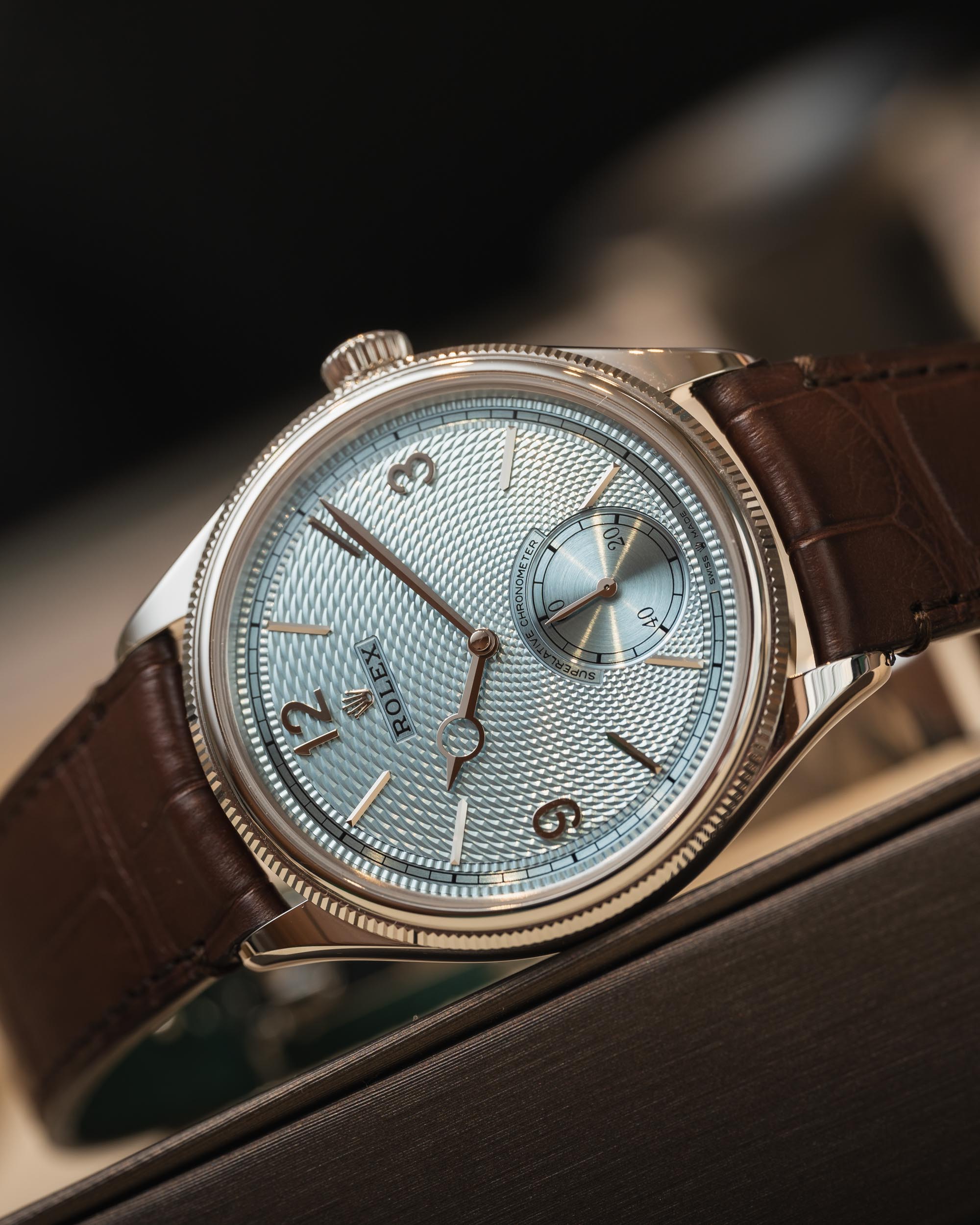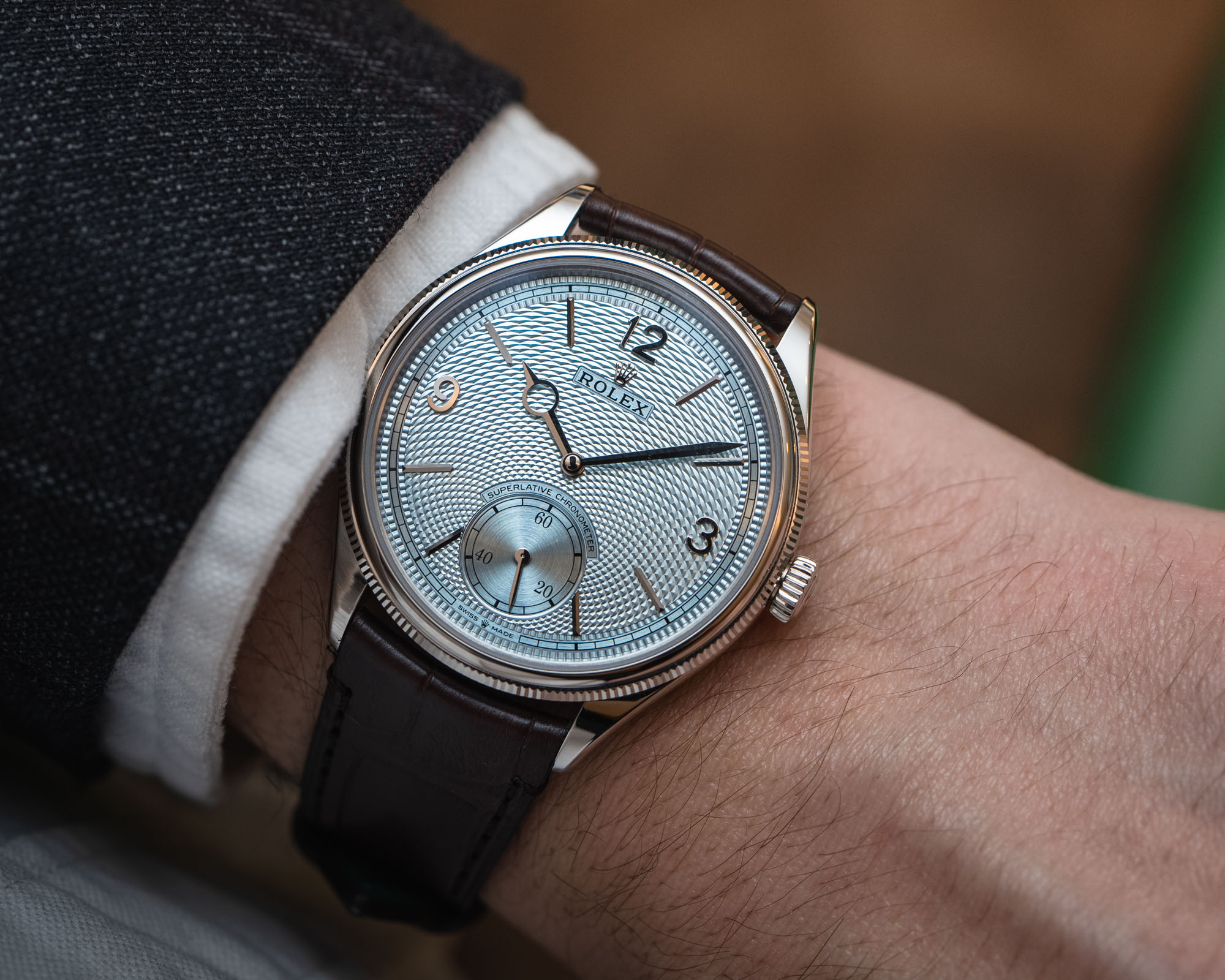
I’m here to tell you what you may have already guessed: The new Rolex 1908 in platinum is amazing. Get the idea of Rolex as a tool watch brand out of your head. Forget the monstrosity of the new Deepsea. Dig back into those old Rolexes you’ve seen. Remember the grace and elegance of the Cellini. Recall the potential of the original 1908 releases, not at all disappointing, but perhaps not fully realized. This is exactly what the 1908 should’ve been from the start, with a gorgeous dial and a perfect weightiness. The Rolex 1908 in platinum is the bee’s knees.
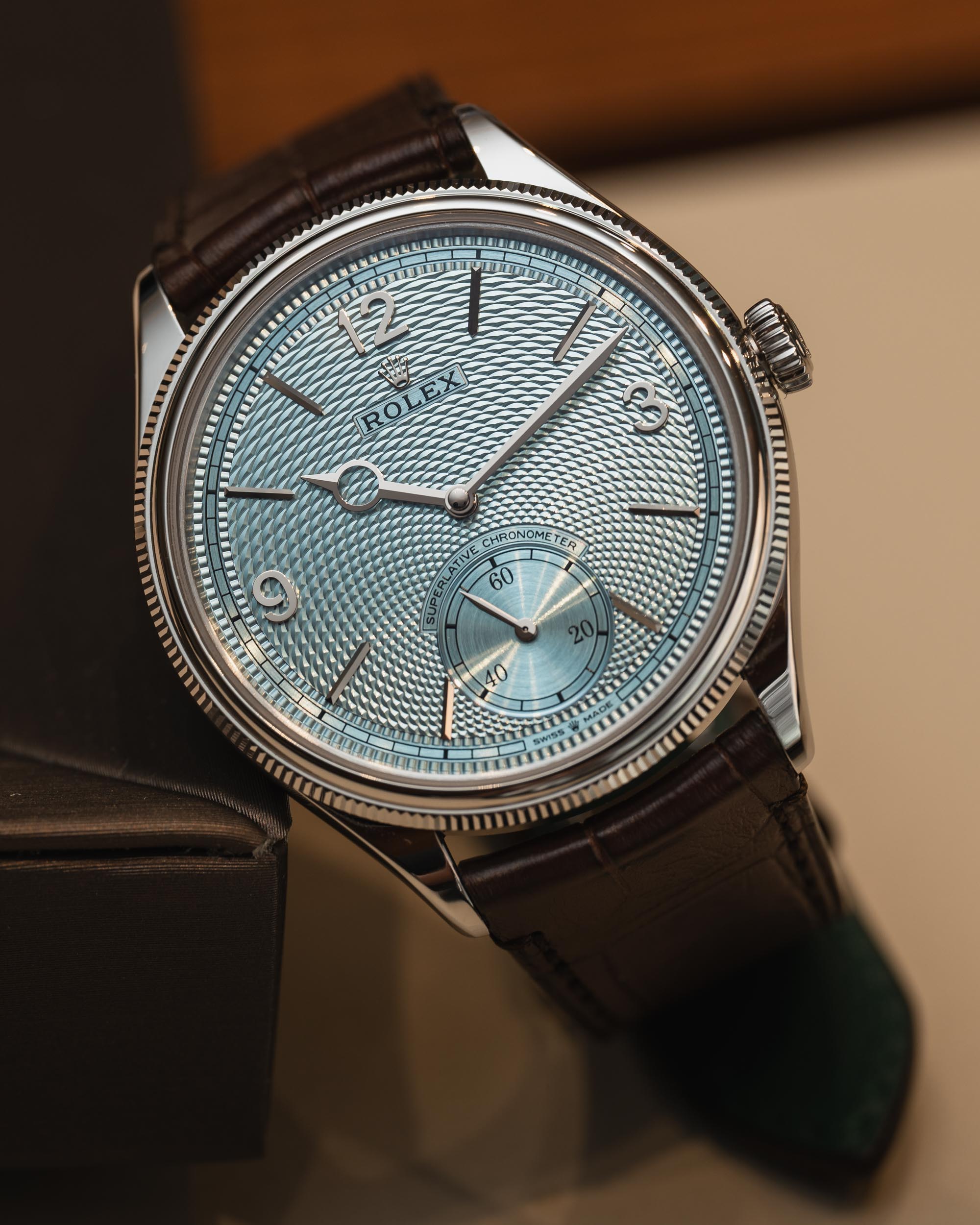
The Rolex 1908 in platinum watch wears damn near perfectly. The curve of the case, how it’s broken up by the thin fluting at the edge of the bezel. In platinum, I expected this to be heavy, even on a strap, but it’s not. The metal adds a luxurious heft that reminds you that it’s there without distracting you or weighing you down. The flatness of the dials on the original models made the 39mm diameter seem even wider, like a placid lake versus a churning one that distorts your perception of where the shores are. With the patterning of the dial, it pulls things in a bit, so it feels just a touch smaller. The 9.5mm thickness just makes wearing it that much easier. The strap is nothing better or worse than I expected, but the butterfly deployant was great, with a perfect curve that didn’t dig into my wrist at all, and felt secure when I had it on.
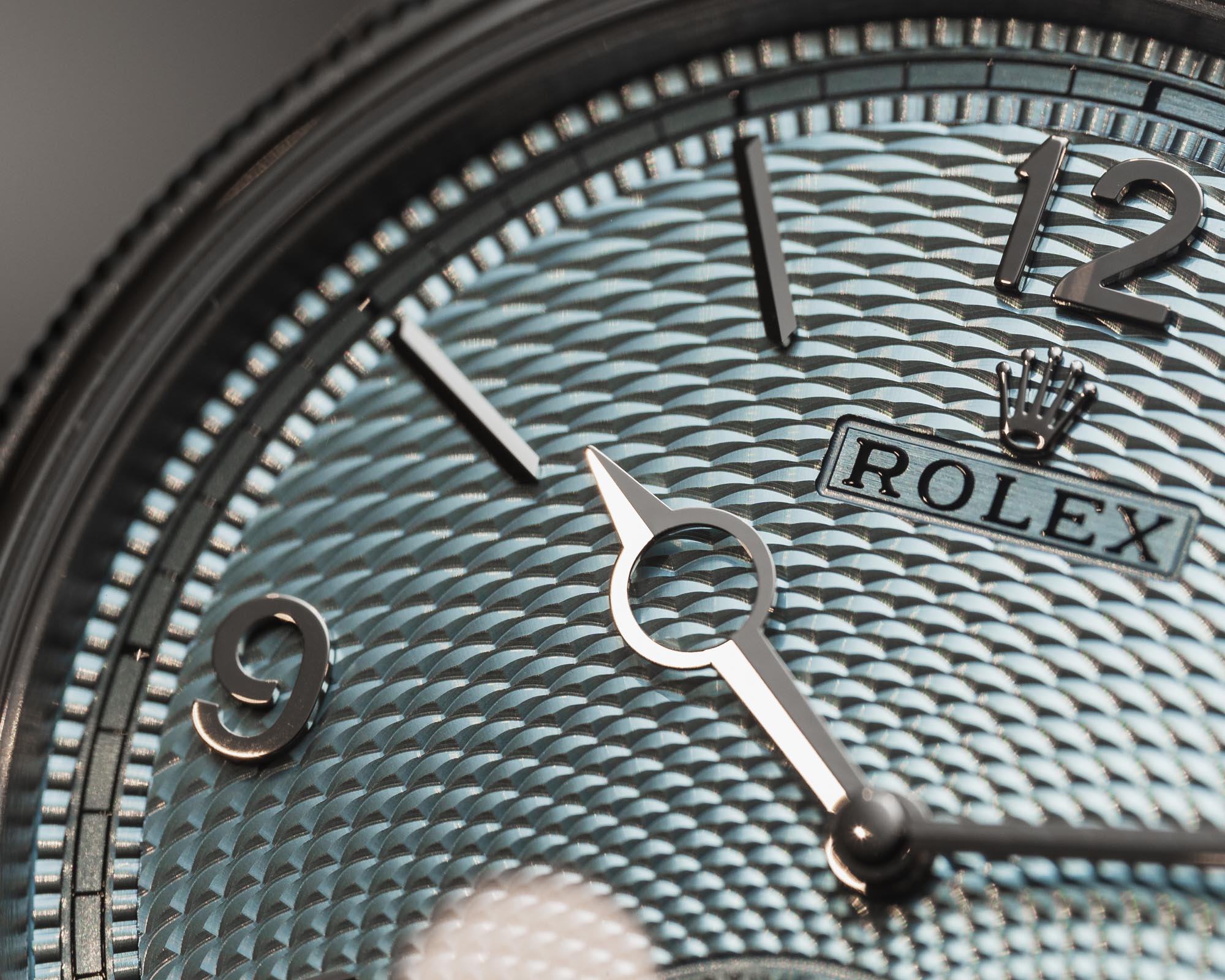
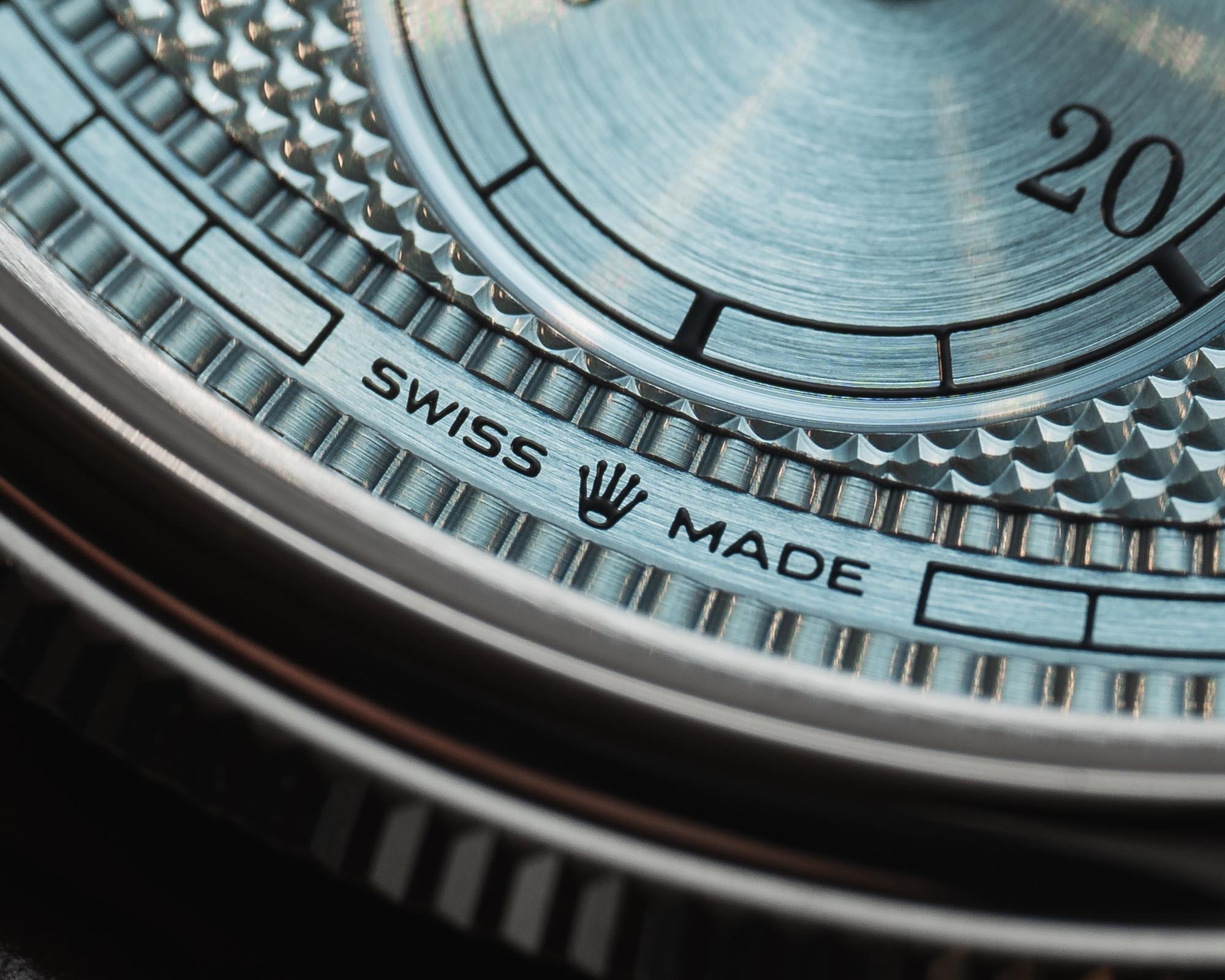
About that dial. It’s so much richer than the other ice blues that Rolex uses on other platinum models like the Day-Date and the Daytona. It’s undoubtedly the exact same hue, but the variation created by the guilloché brings it to life. The blues are darker and the highlights are whiter, a wider dynamic range opened between the two for a more engaging experience. Word is that the guilloché might in fact be done by hand (Rolex is unclear, but has said that it uses traditional engined-turned technique). Whether it is or isn’t, the pattern is extremely precise in its repetition. While I could have done without the “Superlative Chronometer” text, it didn’t bother me while handling the watch, and my eye wasn’t drawn to it. The brushing on the slim minute track and the subdial complement each other perfectly and help to add variety to the dial (though I don’t know if it was needed).
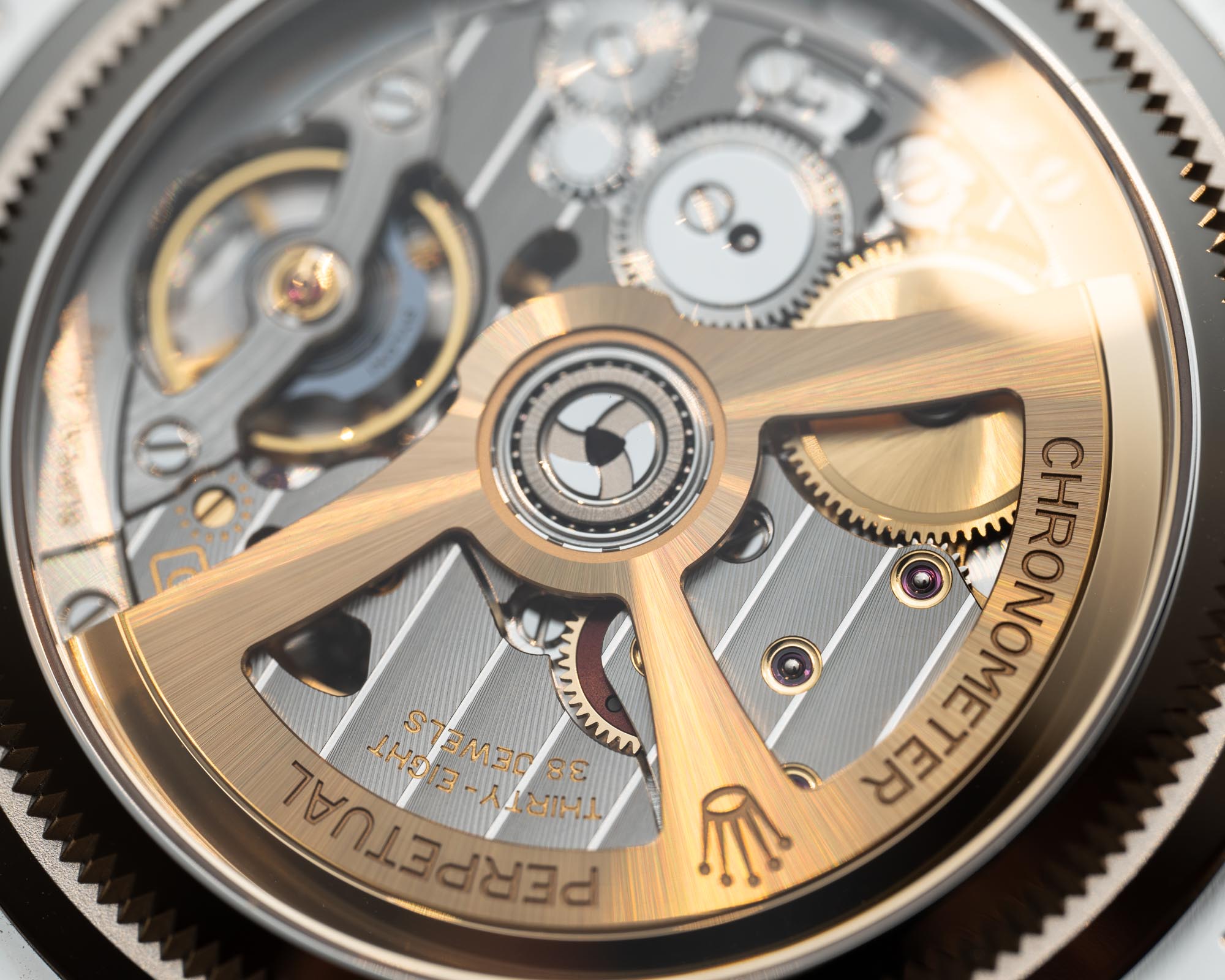
For a Rolex, the movement was stunning. It was great when compared to most watches, but we know Rolex doesn’t put much time into decoration as it usually hides movements behind solid casebacks. There are signs of change on that front, but this is certainly the best finishing you’ll get on any current Rolex model. The sunny rays on the skeletonized rotor catch the light and play against the striping on the bridges below, which feature a nice, polished band between the wider stripes, which actually have a slight curve to the internal striations. As a reminder, the movement has all the wonderful Rolex tech, is rated to -2/+2 seconds per day, and delivers 70 hours of power at 28,800 vph.
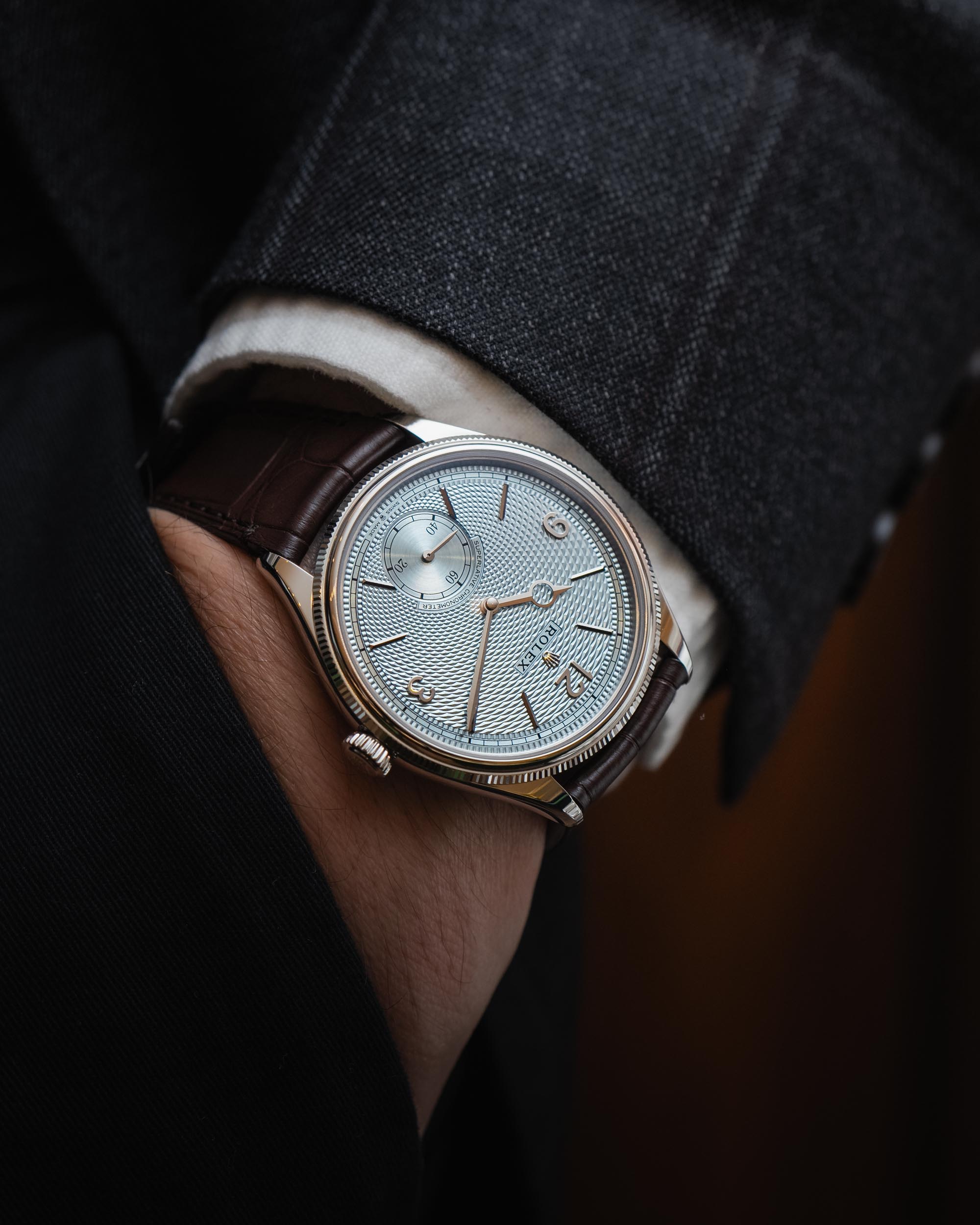
I feel like I’m reliving that moment when the AP 11.59 went from the original Daniel Wellington-like dials to their current form, with striking materials and layouts. The shift from the flat white and black of the original 1908s to the ice blue guilloché triggers an immediate, “Oh, I get it now!” This should have been the debut 1908, which would have made a much bigger splash and allowed them to roll out the white and black dials without people going “Well why did they lead with those?” More like this, please. The Rolex Perpetual 1908 in platinum (Ref. 52506) is priced at $30,900 USD and may just be worth every damn penny. For more information, please visit the Rolex website.

